From the latest 13F report, published quarterly and showing the changes in the portfolios of the largest investment fund managers from the United States, we found out what decisions were made by the most well-known investors: Warren Buffett, Michael Burry or Bill and Melinda Gates. Let's take a look at their choices in Q3 this year and consider what their motivations might have been.
Table of contents:
- What were super investors betting on in Q3 this year?
- How did Warren Buffett and his Berkshire Hathaway invest?
- How did Michael Burry, Scion Asset Management, invest?
- How did Bill & Melinda Gates, Foundation Trust invest?
What were super investors betting on in Q3 this year?
If we look at the net magnitude of change by sector in Q3 this year, the majority of super investors were definitely biased towards a bear market. The most traded stocks were securities from the information technology and technology sectors, where, in total, super investors reduced the size of their positions by 1.3%. On the other hand, they were most likely to buy stocks from the commodities, consumer goods and industrial sectors. Collectively, their holdings increased by 0.66%. This shows how heavily super investors sold off stocks in Q3. It should be noted, however, that the 13F report is limited to stocks in the US market only. Hence, if any fund buys shares on European exchanges, for example, they are not included in the report.
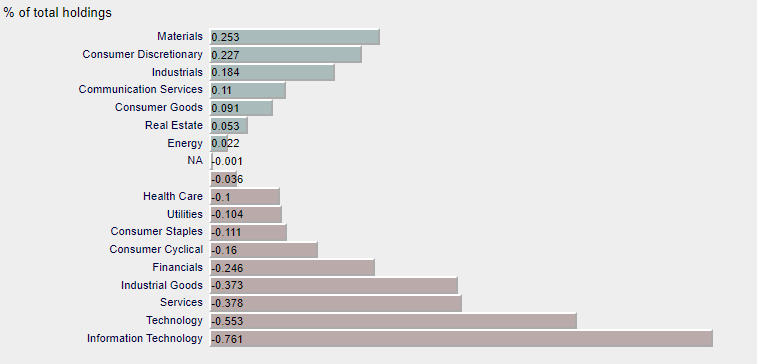
Source: Dataroma
How did Warren Buffett and his Berkshire Hathaway invest?
Warren Buffett is known for his long-term investment approach in companies with solid fundamentals. In the third quarter of this year, his investment fund was clearly on the selling side of equities, reducing as much as 1.72% of its portfolio in the US market. Among the three largest transactions are a 10.45% reduction in its stake in oil giant Chevron Corp., the comprehensive sale of Activision Blizzard shares, which, as Buffett himself pointed out, were undertaken in the context of a possible takeover of the company by Microsoft, and the complete divestment of shares in automotive giant General Motors. In Q3 of this year, only three new companies were added to the portfolio: the media holding Liberty Media Corporation, along with a token stake in the Atlanta Braves, which is owned by the same holding company, or the purchase of radio channel provider Sirius XM Holdings, symbolic in the context of the entire portfolio.
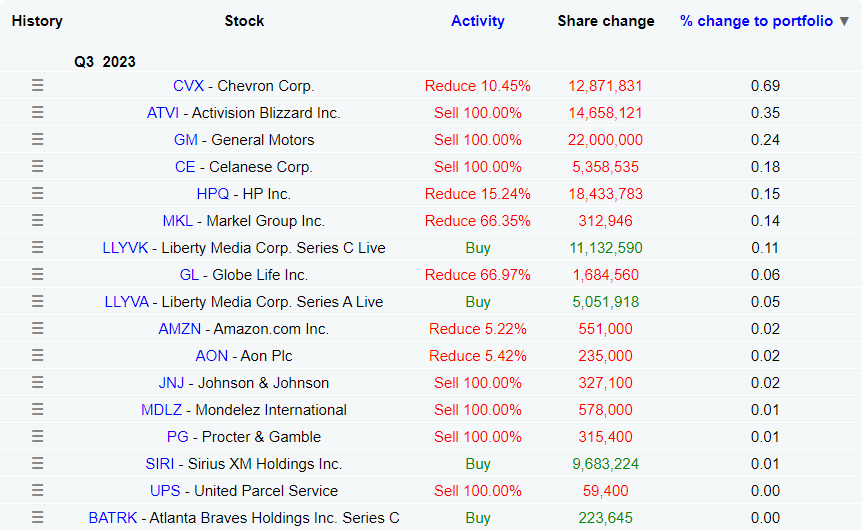
Source: Dataroma
Buffett currently holds the largest stock of free cash in the fund's history, with a total value of $151.97 billion. Reductions in Chevron shares, which still ranks fifth in Buffett's portfolio, can be explained by one of the first steps in the realisation of profits and declining expectations for the future of the energy sector. The sale of Activision Blizzard shares appears to be linked to the successful exit of the tech giant Microsoft's takeover of the company, as the current price is already settling around the takeover price. For regulatory reasons, the process has been protracted. In contrast, Buffett's decision to divest himself of General Motors shares was often justified by suggestions of a worsening outlook for the automotive industry in the coming years.
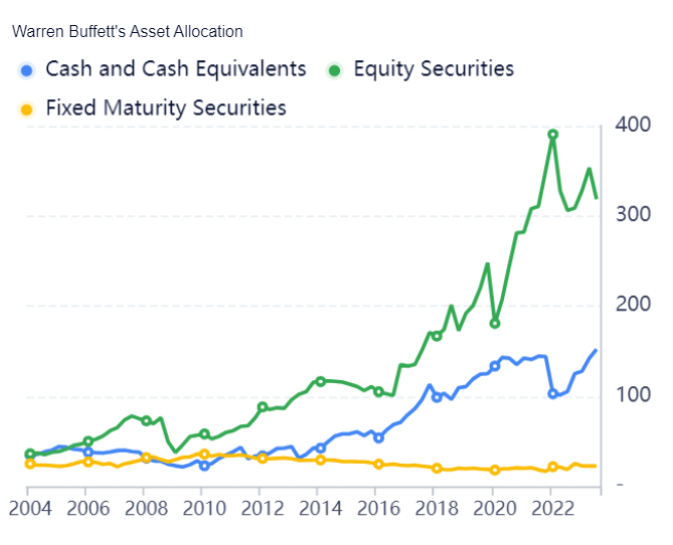
Source: Gurufocus
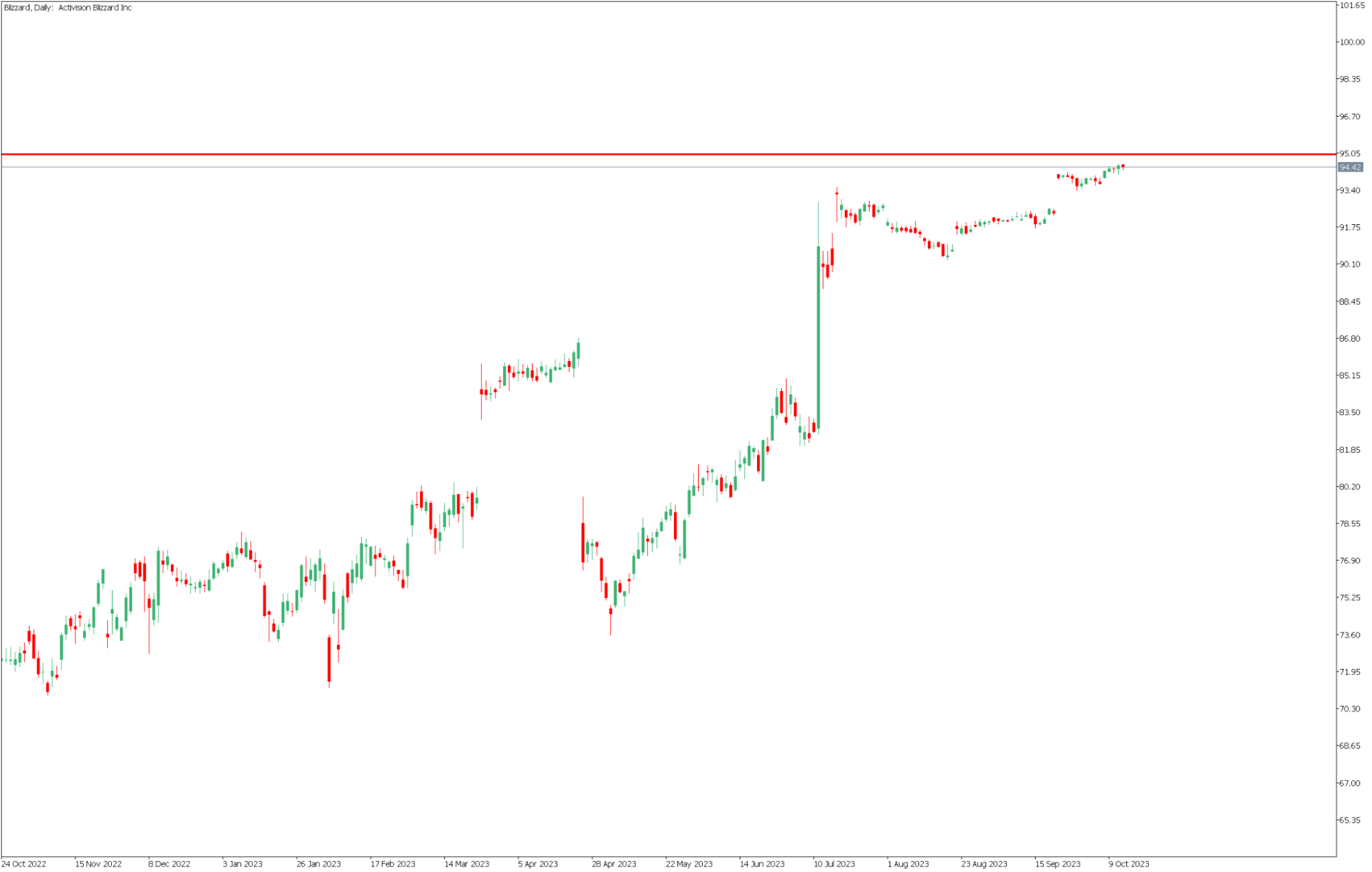
Source: Conotoxia MT5, Blizzard, Daily
How did Michael Burry, Scion Asset Management, invest?
Analysing the history of the positions taken by Michael Burry, who became famous for predicting the 2008 crisis, is fraught with a degree of difficulty, as this trader is famous for frequently changing his investment portfolio. His famous bet under Q2 of this year, with a market value of USD 1.6 billion, when he bet on the S&P 500 and Nasdaq indexes to fall by as much as 93.6% of the portfolio's value, was closed in Q3. After the indices surged, it is estimated that Burry may have lost around USD 26.5 million on this trade.
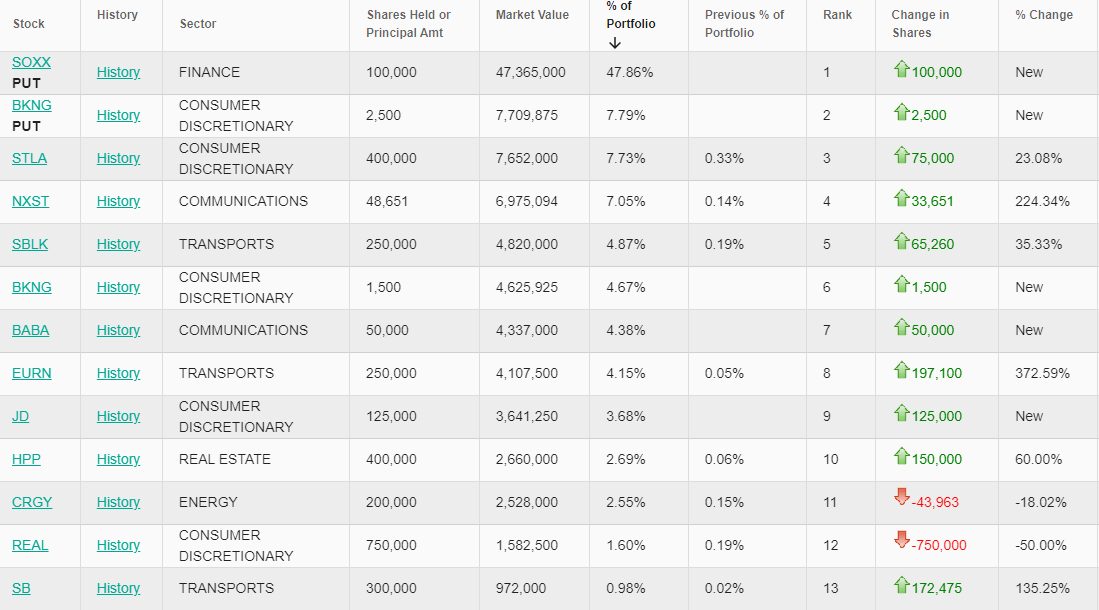
Source: Whalewisdom
Just 1.5 months after completing this transaction, at the end of Q3, Burry opened a new bet (again via options) on the decline of stocks from the semiconductor sector, betting on the decline of the iShares Semiconductor ETF (SOXX) with a value of US$47bn, which accounted for as much as 47.86% of the total portfolio value. He also purchased options on the decline of Booking Holdings Inc. worth US$7.7 million, which accounted for 7.79% of the portfolio value.
The investment calculated for the decline of the semiconductor sector appears to be linked to the growing expectations of the development of artificial intelligence. A large proportion of the SOXX fund is made up of shares in AMD, Broadcom or Nvidia, all of which are directly involved in the development of this technology, which has been reflected in a more than 50% increase in the value of the fund over the year. Burry probably expects the market to realise gains in the near term. However, we do not know whether he still has these positions open in the market.
Log in and take the opportunity!
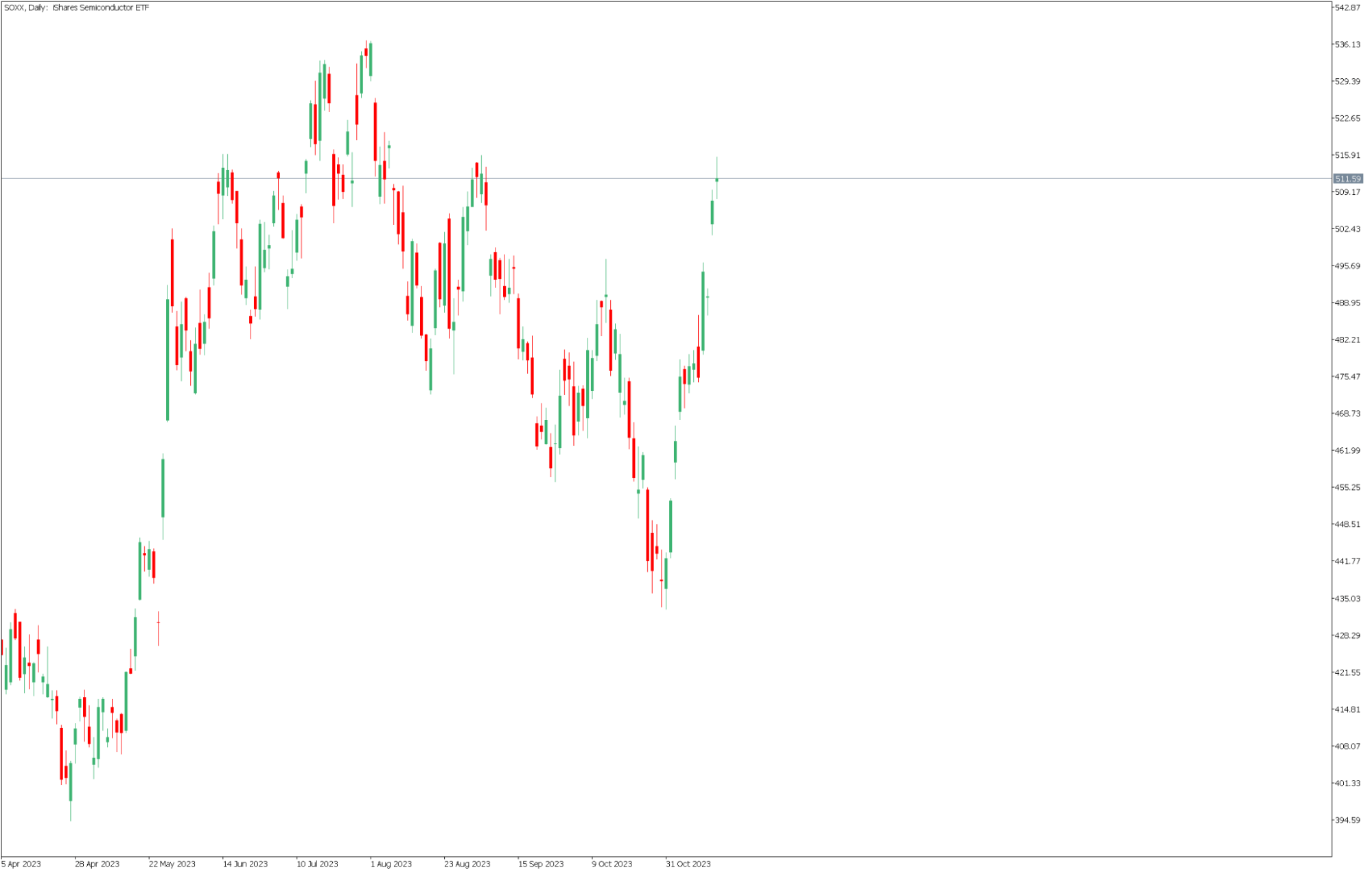
Source: Conotoxia MT5, SOXX, Daily
How did Bill & Melinda Gates, Foundation Trust invest?
In contrast to Buffett, the Bill and Melinda Gates Foundation opted for small purchases, selling only 10% of their holdings in Berkshire Hathaway, Warren Buffett's investment fund, which represented 2.35% of the value of their portfolio. The foundation bought as many as 54 new positions, but their total value was only 0.5%. As a result, Bill Gates and his ex-wife sold far more than they bought. The move may be an attempt to diversify the investment portfolio against Buffett's heavily concentrated fund.
Currently, the fund's largest investment is Gates' highly sentimental Microsoft Corp. shares, which account for 31.88% of the portfolio. Second place is still occupied by Buffett's investment fund with 20.3%, and in third place is one of Canada's largest transport companies, Canadian National Railway Co., accounting for 15.3% of the total portfolio. It should be added here that Bill Gates is also the largest holder of agricultural land in the United States, which the report does not take into account.
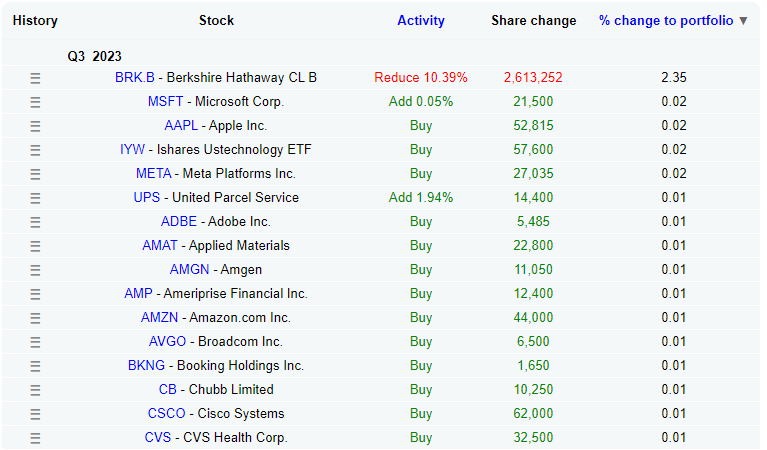
Source: Dataroma
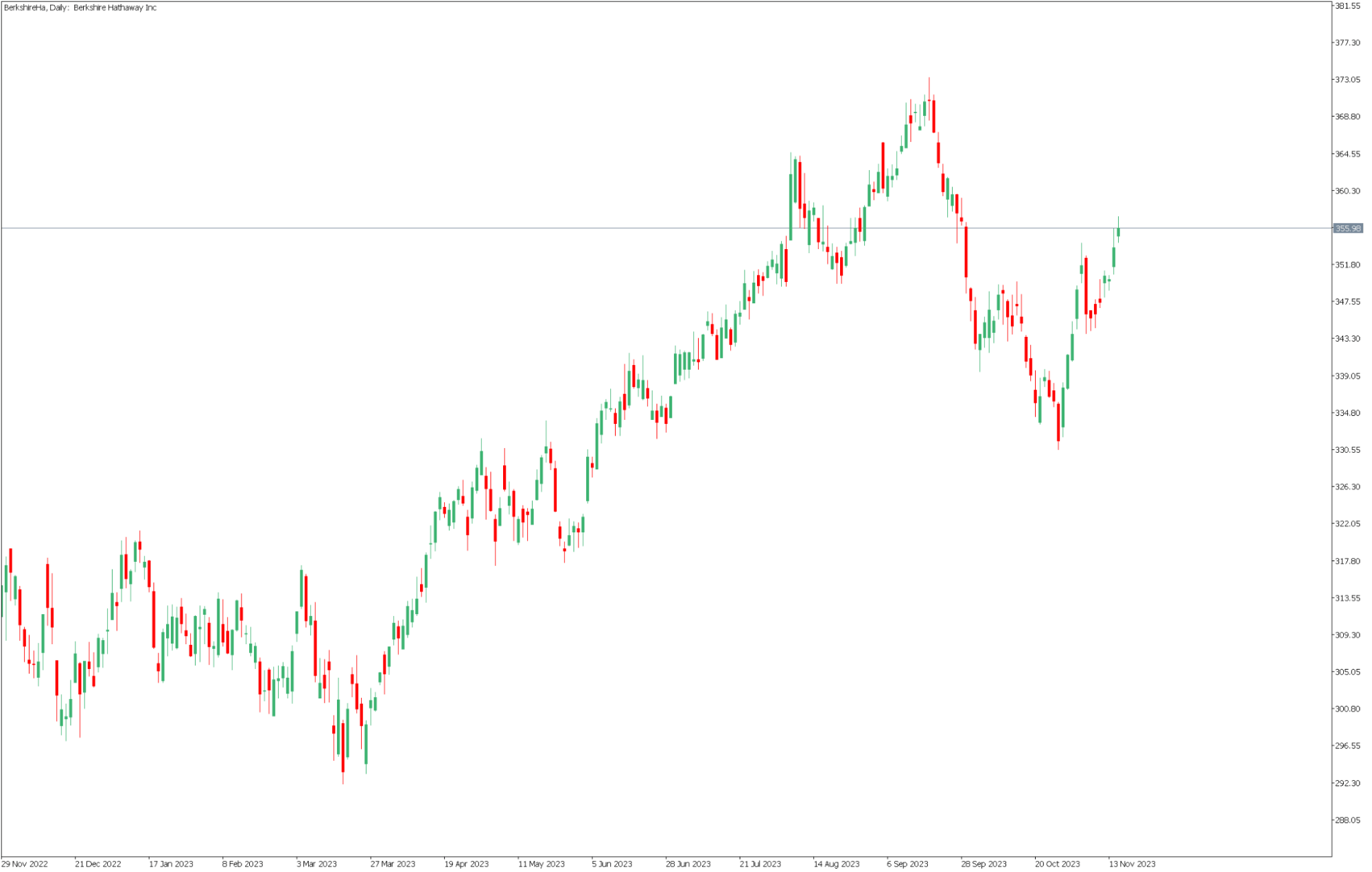
Source: Conotoxia MT5, BerkshireHa, Daily
Grzegorz Dróżdż, CAI MPW, Market Analyst of Conotoxia Ltd. (Conotoxia investment service)
Materials, analysis and opinions contained, referenced or provided herein are intended solely for informational and educational purposes. Personal opinion of the author does not represent and should not be constructed as a statement or an investment advice made by Conotoxia Ltd. All indiscriminate reliance on illustrative or informational materials may lead to losses. Past performance is not a reliable indicator of future results.
CFDs are complex instruments and come with a high risk of losing money rapidly due to leverage. 72.95% of retail investor accounts lose money when trading CFDs with this provider. You should consider whether you understand how CFDs work and whether you can afford to take the high risk of losing your money.


